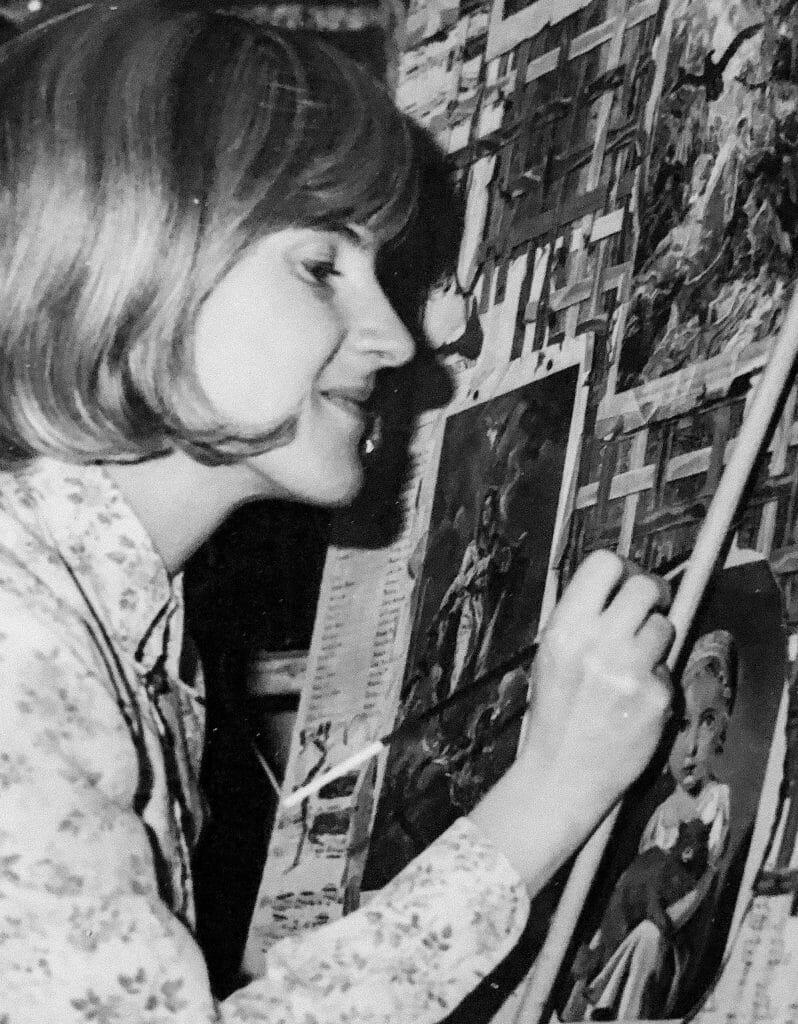
Sharon Craven Kinzer (1943-2022) grew up in a household that brimmed with creativity. Her mother, Louise Craven (Hourrigan) was a painter who taught art classes in their Alexandria, Virginia home. Ms. Kinzer began exhibiting her own work while still in her teens. Fascinated by the work of Rubens and other European Old Masters, she decided to pursue classical techniques. In 1962, she entered the Schuler School of Fine Arts in Baltimore, where she became a follower of French artist and chemist, Jacques Maroger.
Using a gel-like oil-resin medium that Maroger developed, Ms. Kinzer mastered trompe l’oeil techniques. To achieve photorealistic lights and shadows, she painted on Masonite board which she coated with white gesso and prepared with a translucent glaze of the medium. Details such as fabric textures and musical notes were painstakingly reproduced with an ultra-thin brush. The process was laborious: Larger still lifes required six to nine months to complete.
Classically trained, Sharon Craven Kinzer has always defied modernist trends. Nevertheless, her collage-like works are often so complex, they approach abstraction. Fractured egg shells, crumpled dollar bills, and Victorian ephemera form juxtapositions that are startling and provocative. Seemingly random objects combine with a Mondrian-like sense of order.
Lauded for her technical skill and her unique vision, Sharon Craven Kinzer has exhibited at the Smithsonian Institute, Veerhoff Gallery in Washington D.C., Pierre’s Old Town, and venues throughout Ohio, where she lived for many years. In the 1970s while her husband was in the Army, she also lived in Okinawa and incorporated Asian themes in some of her paintings.
Her accolades include first place awards from the National Art Festival in Akron, the Canton Art Institute, and the Liturgical Art Guild. Corporate sales include paintings for the Goodyear Corporation, the Hobart Corporation, and Texas A&M University.